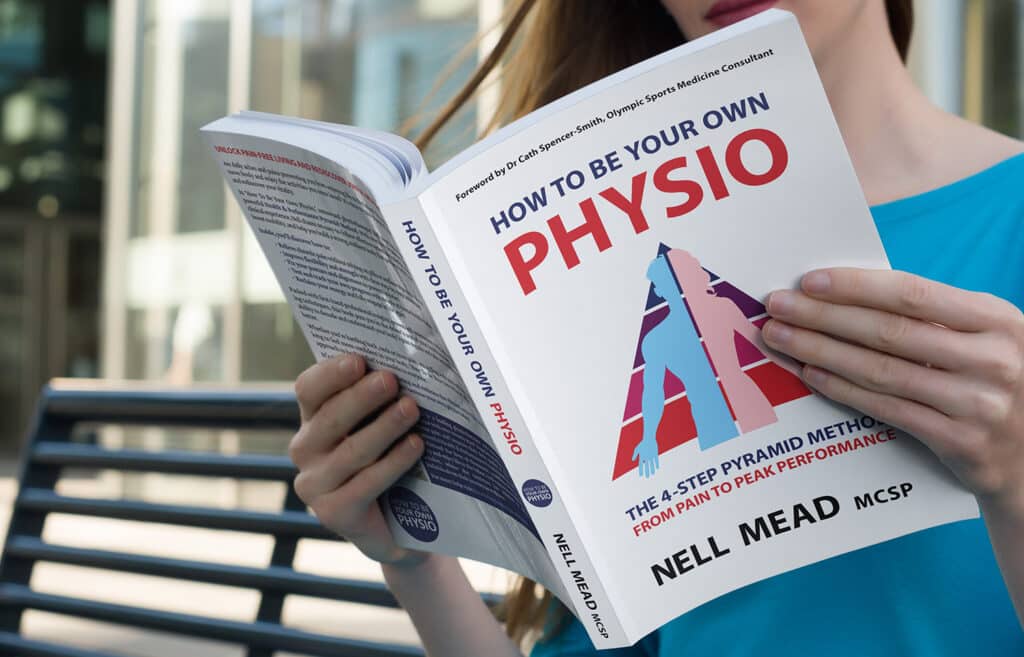Over the past few months, I’ve attended presentations and read articles by excellent physiotherapists whose opinions I value, disparaging the clamshell exercise and saying it shouldn’t be prescribed – that it’s not a functional exercise and doesn’t materially alter people’s movement patterns. However, I still consider it a fundamental exercise for many people with underlying hip and pelvis problems, as long as it is taught and practised well.
To understand why, and what that means in practice, it’s important to consider what we are aiming to achieve.
Traditionally, the aim has been to “strengthen the glutes” and it’s been taught relatively carelessly. All you have to do, apparently, is to lie on your side with knees bent and feet together, and then rotate at the top hip so that your knee comes up and foot stays down, opening the knees like the opening of a… well, a clamshell.
However, in practice, when you have a dysfunctional hip, knee or pelvis, which has caused your gluteus medius to become inhibited, what tends to happen is that your brain tends to try to support your gluteus medius by rewiring your nervous system so that whenever you try to switch your gluteus medius on, you simultaneously switch on the hip flexors and tensor fascia lata at the front of your hip.
This is not optimal – a healthy nervous system has choices and can stimulate you to move in different ways in different situations – and it quickly becomes a habit.
When this happens, instead of you simply being able to use your gluteus medius to produce a pure external rotation at the hip (or, as your heel hits the ground when you walk or run, gluteus medius should contract to prevent internal rotation of the femur, thus reducing strain on your pelvis, knee and foot), you inadvertently contract the hip flexors and TFL at the same time, which disrupts the forces through your hip, leaving you at risk of uncontrolled femoral rotation and/or jamming your hip.
If you don’t retrain this movement pattern, and relearn to contract the glutes and hip flexors separately (a process known as dissociation) then you will struggle to make a full recovery. I would argue that it is much more difficult to learn to dissociate the hip flexors and glutes when you are simultaneously trying to do more complex tasks involving more muscles – such as squats, lunges and dead lifts – so while I absolutely do incorporate these more advanced exercises once dissociation is learned, I don’t teach them until my patient has full control of their hip muscles. One step at a time!
So for me, the point of teaching clamshells is not about strengthening the glutes at all – it’s not a strength exercise, but more a coordination one. When you can dissociate, it’s much easier to learn optimal squat, lunge and dead lift technique; and I believe it will give you much more protection for the long term than strength alone without alignment and control.
So – how do I teach clamshells? Have a look at this video!
- I get my patient to lie on one side, with knees bent and feet together, and place the top hand over the belly of gluteus medius, with the bottom hand feeling for the hip flexors and TFL.
- The first step is simply to be able to contact gluteus medius while keeping the hip flexors and TFL relaxed. It’s sometimes helpful to visualise the femur drawing back towards the hip socket. You should feel a tension under the top hand, while the muscle under the bottom hand remains soft.
- Once you can do this consistently, gradually try to increase the intensity of the gluteal contraction until your knee starts to rise, while still keeping hip flexors and TFL relaxed. Only raise the knee as far as you can control it. If you feel the hip flexors and TFL contracting, stop, relax and start again.
- Maintain glute control as you lower the knee back down – that’s actually the glute’s role as you walk, so it’s the most important part of the exercise.
- You don’t have to go through a great range with this exercise – taking the knee to neutral (parallel with the top of your pelvis) is enough.
Once you can do this – try doing it standing up, with toe on the floor and knee bent, and then gradually straighten your knee until you can contract gluteus medius on its own while you are standing. From there, you can gradually increase the challenge – start moving through range, add weight, add complexity – until you can control your hip using gluteus medius in any relevant situation.
So – while I definitely don’t think the clamshell is the only exercise you need by any means, if you can’t dissociate glutes from hip flexors then, done as described, in my view it remains an excellent place to start!
Do you have problems with your back, hip, knee or foot? Can you keep your hip flexors relaxed when you do a clamshell? If you’re struggling with any of these issues, please call us on 0207 175 0150 or click the button below for a call back, and let us help.







